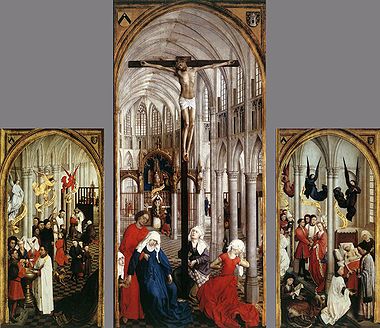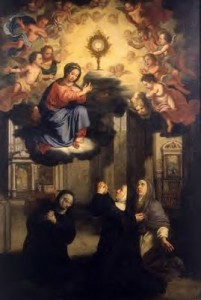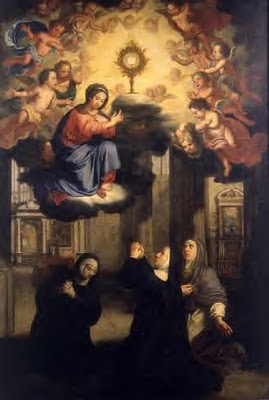June 7, 2012
June 23, 2011
June 3, 2010
Corpus Christi ain’t just a city in Texas.
Short for Corpus et Sanguis Christi, aka the Body and the Blood of Christ, Corpus Christi is one of the holiest Thursdays of the year.
“The feast of Corpus Christi is one time when our Lord in the Blessed Sacrament is exposed not just to faithful Catholics but to all the world.“
http://www.therealpresence.org/eucharst/pea/cchristi.htm

According to The Catechism of the Catholic Church 1113 “The whole liturgical life of the Church revolves around the Eucharistic sacrifice and the sacraments.”
The seven sacraments are:
- Baptism
- Confirmation
- Eucharist
- Penance
- Anointing of the Sick
- Holy Orders
- Matrimony

The Eucharist originates from Jesus’s words at the Last Supper.
While they were eating, Jesus took bread, gave thanks and broke it, and gave it to his disciples, saying, “Take and eat; this is my body.“
Then he took the cup, gave thanks and offered it to them, saying, “Drink from it, all of you. This is my blood of the covenant, which is poured out for many for the forgiveness of sins. I tell you I will not drink of this fruit of the vine from now on until that day when I drink it anew with you in my Father’s kingdom.”
Matthew 26:26
Or, as Paul retold it to the Corinthians:
The Lord Jesus on the night when he was betrayed took bread, and when he had given thanks, he broke it, and said, “This is my body which is for you. Do this in remembrance of me.” In the same way also the cup, after supper, saying, “This cup is the new covenants in my blood. Do this as often as you drink it, in remembrance of me.”
Corpus Christi came about in the 13th century, when a 16 year-old girl named Juliana began having visions. Juliana had been placed in a convent at age 5, upon the death of her parents. At 13 she decided to become a nun. At 16 the visions began, first with a vision of the moon, shining bright, but with one black spot.

She puzzled over the vision. It wasn’t until many years later when subsequent visions and conversations with the Holy Spirit revealed to her that the black spot represented the absence of a joyful celebration of the “Most High and Most Holy Sacrament of the Alter.” The only observance of transubstantiation at that time was Maundy Thursday during Holy Week, which emphasized the Jesus’ suffering and death, but not the aspects of joy, love, and salvation that the Eucharist offered.
Juliana breached the subject of a feast for the blessed sacrament with the Archdeacon Jacques Pantaleon–originally a cobbler’s son two years Juliana’s junior–and the Bishop de Thorete of Liege. The Bishop , enamored by the idea, officiated the holiday on a local scale in 1246.
When Jacques, the former cobbler’s son, became Pope Urban IV in the 1260s, he recalled the holiday envisioned by Juliana and extended Corpus Christi to be celebrated across Christendom. It has been celebrated by the Catholic Church every year since 1264.
Corpus Christi is also observed by the Anglican Church. John Donne wrote of the Eucharist:
He was the Word that spake it;
He took the bread and brake it;
and what that Word did make it;
I do believe and take it.


Somehow i missed the point. Probably lost in translation :) Anyway … nice blog to visit.
cheers, Sherwin.